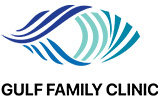Notice how your children put their heads too close to their reading material? Or perhaps they tend to reverse words or omit certain letters while reading? These could all be signs of learning problems associated with their vision.
Education and eyesight are intimately linked, with 80 percent of learning delivered visually. Even us adults rely on our eyes for information more than half the time, so just imagine the struggle your little ones may be experiencing during their formative years.
Want to know when it’s time to look into eye specialists for kids? We’ve compiled a list of the visual learning skills they need and some signs of vision-related learning problems.
Vital Visual Learning Skills
Before tackling the common signs of learning problems related to eyesight, you must first understand the essential visual skills your children need, such as:
1. Eye Tracking or Teaming
Eye tracking describes the smoothness of eye movement, while eye teaming focuses on the unison of both eyes in efficiently gathering information.
Eye teaming issues lead to double vision or headaches when reading.
On the other hand, issues in eye-tracking cause your child to lose their place in the reading material, leading to problems with comprehension.
2. Eye Focus
Eye focus helps children see subjects more clearly in varying viewing distances.
When there’s an issue in eye focus, children can experience headaches and eye strain. This has also been linked to poor attention span.
3. Hand-Eye Coordination
Hand-eye coordination is the ability to use visual cues to direct hand movement when drawing pictures or catching a ball.
4. Visual Perception
Visual perception describes people’s ability to organize images on a page into letters, words, and ideas. It allows a person to comprehend and recall what they just read.
8 Signs of Vision-Related Learning Issues in Children
Kids require all their senses to learn everything they need to thrive. However, most of the educational materials offered in school or at home are visual, so sight is considered the most important of all five senses in terms of education.
If you suspect an issue with your child’s eyesight that may hinder their cognitive development, be on the lookout for the following eight signs:
1. Disinterest in reading and tasks that need long concentration
When there’s an issue with their eyesight, children experience headaches, blurry vision, or eye strain when reading or performing tasks that require extended visual attention and concentration. This could explain why your little ones may appear disinterested in what they’re doing.
2. Below-level reading skills
Several vision problems could be causing the delayed development of your children’s reading skills.
They could be having eye teaming, tracking, or focus problems because of hyperopia (farsightedness), myopia (nearsightedness), or astigmatism. These conditions could make the words appear blurry or doubled, making it hard for them to read.
3. Losing track of their place when reading
Notice how your children sometimes skip a word or repeat one they already read? It could be because of eye-tracking issues.
This problem is often a result of the inability to move the eyes fluidly across the page. Instead, the eyes must “jump” when they need to move to the next word, which can sometimes be inaccurate.
4. Squinting
Squinting often means your child is experiencing refractive errors, like astigmatism, nearsightedness, or farsightedness.
It could also be accompanied by your child complaining about blurry or double vision and difficulty reading or seeing objects at a certain (far or near). Although squinting can correct the issue, doing it too often can cause headaches and eye strain.
5. Crossed eyes
This is a common sign of strabismus or lazy eye (amblyopia), two binocular vision disorders that lead to depth perception and 3D vision issues. Studies also show that it can slow down a child’s reading skill development, causing frustration and low self-esteem.
6. Below-level hand-eye coordination
Poor hand-eye coordination could be a sign of convergence, visual tracking, and binocular vision disorders. This skill is essential, especially when performing tasks like copying, drawing, and sports.
7. Reading comprehension and spelling difficulties
Besides disinterest, children may also have trouble understanding what they’re reading or memorizing letter sequences to form words.
Besides eye teaming issues, spelling and reading comprehension problems could also cause poor visual perception and memory.
8. Sore eyes or headache after prolonged reading
Convergence insufficiency causes the eyes to converge property to form clear close-up images. This not only affects children’s ability to read but also leaves them with headaches or sore eyes after prolonged attempts at reading.
The Earlier, The Better
A comprehensive eye examination can help verify any eye problems your child may have that could hinder learning. It could just be a simple refractive error that can be resolved with corrective eyewear or a lazy eye that requires immediate amblyopia treatment for your child.
The bottom line is that the earlier you can have your child diagnosed and treated, the better. Talk to us today. We’re here to help.
Popular Sites/Sources:
https://www.covd.org/page/symptoms
https://www.aoa.org/healthy-eyes/eye-health-for-life/school-aged-vision?sso=y
https://www.aoa.org/healthy-eyes/eye-and-vision-conditions/vision-related-learning-problems?sso=y








